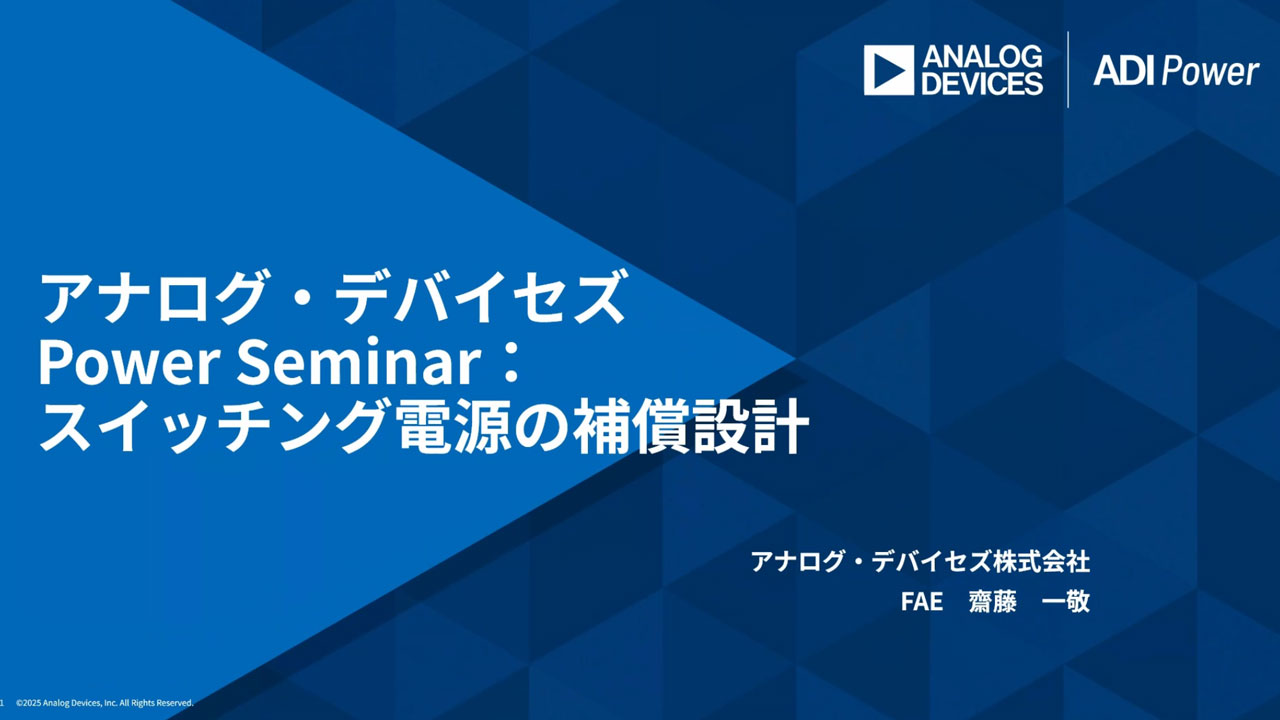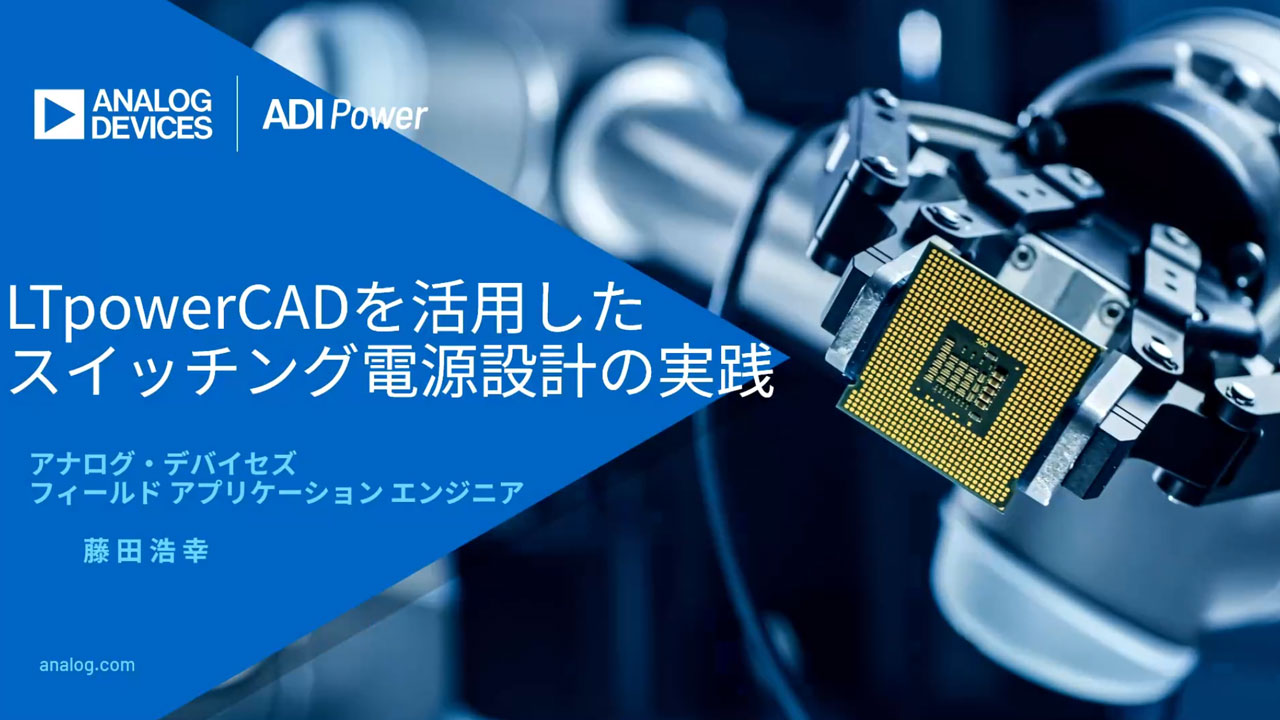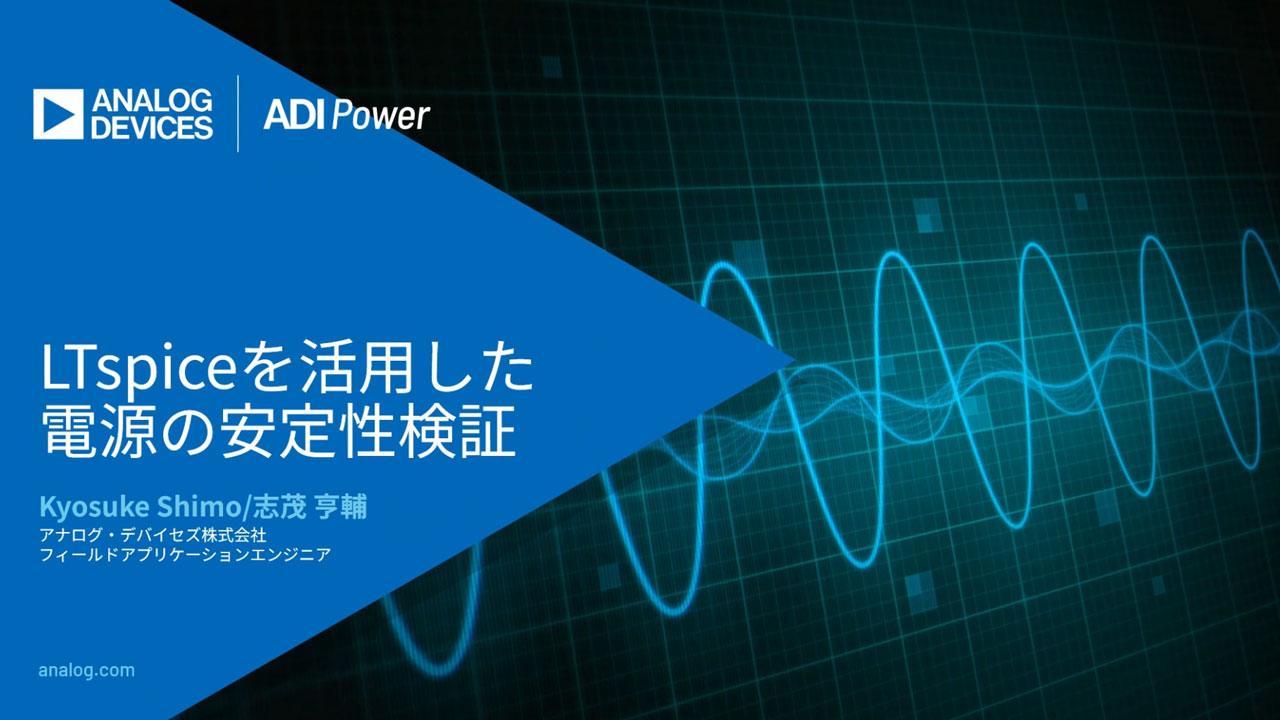超低濃度の塩素を高い精度で測定し、逆浸透膜の保護を強化する
概要
本稿では、塩素処理と脱塩素処理の制御を行うための様々な技術について説明します。特に、適切な手法を採用することによりコストを削減する方法について詳しく解説します。
はじめに
水の処理に使用される膜の量は、過去5年間でほぼ2倍になりました1。特に大きく伸びたのは、濾過(ろ過)のプロセスで使用される逆浸透(RO:Reverse Osmosis)膜です。RO膜は、水道水/廃水の処理や超純水(UPW:Ultrapure Water)の製造など、産業分野を中心として広く使われています。ただ、RO膜については、38ppbを超える塩素に長時間曝されると(1000ppm/時で3年間に相当)、膜の構造と完全性が損なわれることが複数の研究によって指摘されています。その一方で、消毒剤を使用しなければ、バイオファウリング(微生物の付着による膜の詰まり)が促進され、回収率の低下を招くことも明らかになっています2。この微妙なバランスを維持するにはどうすればよいのでしょうか。そのためには、膜を使用するシステムにおいて、特にRO供給水(RO膜で濾過された水)の酸化剤の濃度と脱塩素剤の添加量を正確にモニタリングする必要があります。また、酸化消毒剤に対する膜の累積曝露量をモニタリングし、膜の効率と寿命への影響を把握することも重要です。多くの事業者は、残留塩素を管理するために様々な手法や計測器を導入しています。しかし、測定の頻度が低かったり、測定が間接的な方法によって行われていたり、測定精度が低かったりするために、適切な結果が得られないケースが少なくありません。
| 分析技術 | 測定原理 | 主な長所 | 主な短所 | |||
| 酸化還元電位法(ORP: Oxidation-Reduction Potential) | 電気化学的な方法(電位差を測定)であり、酸化電位の変化に比例してmV単位の出力が変化します。 | 水中の酸化剤の存在に迅速に反応します。試薬は必要ありません。 | 間接的な方法でもあり、特異性に欠ける方法でもあります。マトリックスの影響(サンプルのpH、流量/圧力など)を受けやすく、応答が非線形になります*。 | |||
| 電流測定法 | 電気化学的な方法であり、塩素濃度に比例して電極間の電流/電圧が変化します。 | 水中の塩素の濃度が変化すると迅速に反応します。試薬は必要ありません。 | キャリブレーションに結果が左右されます。また、マトリックスの影響(サンプルのpH、流量/圧力など)を受けやすく、塩素に対する感度が低下する可能性があります。 | |||
| 比色分析法 | 塩素の濃度に比例して色の強度が変化します。 | 直接的かつ高精度の測定が可能です。サンプルの状態には依存しません。キャリブレーションについても安定性が得られます。 | 非連続な応答(バッチ分析)を示します。また、試薬が必要です。 | |||
| *塩素の有無に対するORPの非線形な応答については図1を参照してください。 | ||||||
表1は、塩素処理/脱塩素処理のプロセスを制御するために利用可能な技術の長所と短所についてまとめたものです。また、図1には、最終的に水を放流する前に塩素処理/脱塩素処理を適用している廃水処理施設で実施した比較テストの結果を示しました3。このテストでは、比色分析法と酸化還元電位法(ORP:Oxidation-Reduction Potential)を比較しています。この結果から、ORPは塩素の破過に対して比較的高速に応答することがわかります。しかし、亜硫酸水素ナトリウム(SBS:Sodium Bisulfite)などの還元剤が過剰に存在する場合には反応時間が長くなることがあります。また、ORPの絶対値に頼りすぎると、この技術の限界と相対的な性質の影響によって誤解が生じる可能性があります。ORPのレベルと塩素の濃度の間に直接的な相関があると見なし、それに基づいて応答が定量化されることもあるでしょう。しかし、その場合には特別な配慮が必要です。場合によっては、モニタリングにどのようなセンサーを使用するのかにかかわらず、重大な問題が生じる可能性があります。つまり、ORPの測定値は、実際の塩素濃度を正確に反映していない可能性があり、そのことが原因で問題が生じるかもしれないということです。.
一部の事業者は、塩素処理/脱塩素処理を管理するために、もう1つの電気化学的な方法を導入しています。それが表1に示した電流測定法(アンペロメトリ)です。この手法で使用するセンサー(電流測定センサー)は、表1に記した原理に基づいて機能します。ORPとは異なり、電流測定法はより選択性が高く、塩素の濃度に対する相関の面で優れています。但し、塩素が存在しない場合や塩素の濃度が非常に低い場合、この手法を適用すると問題が生じる可能性があります。電流測定センサーを持続的に動作させるためには、サンプルに含まれる酸化剤が存在していなければなりません。そのため、断続的にモニタリングを実施するアプリケーションにおいて問題が生じることがあるのです。サンプルの流れが断続的である場合や塩素が常に存在しない場合、電流測定センサーのプローブは塩素に対する感度を失い、より頻繁な相互作用が必要になることがあります。例えば、プローブの表面の単純な汚れが原因で、電極に有機物や無機物の被覆層が形成されるケースは少なくありません。それに限らず、様々な要因によって必要な電気化学的な反応が妨げられる可能性があります。
ORPセンサーまたは電流測定センサーが完全に機能していたとしても、それらの性能や精度は、pH、流量、圧力など、サンプルの他のパラメータによって左右されます。電気化学センサーの長所の1つは試薬が不要なことです。また、連続的に測定が行われるので、塩素濃度の上昇に対して迅速に反応することも長所の1つです。図2は、塩素濃度の上昇に対する反応を視覚的に表したものです。この例では、連続的な分析とバッチ分析を比較しています。ここで、比色分析法はバッチ分析の代表的な例だと言えます。具体的には、サンプルを採取し、試薬を追加して、吸光度を測定するという作業を周期的に実施します。通常、この過程は1分から2分で完了します。
図2を見ると、電流測定センサーを使用した場合、その初期応答として即座に測定結果が変化することがわかります。つまり、同センサーを使用すれば塩素濃度の変化を早期に検出できると言うことです。但し、電流測定でもORPでも、最高の測定精度が得られるタイミングはほぼ同じになります。連続的に測定を行う手法であっても、それに使用するセンサーには応答時間という特性が存在します。例えば、最大信号レベルまたは最高精度の90%、95%に達するまでの時間はそれぞれT90、T95と表現されます。これらの特性の値は、通常60秒から120秒の範囲で規定されます。また、センサーによって特性は様々であることに加え、測定結果はセンサーとサンプルの状態にも依存します。ここでは比較の対象として、標準的なジエチル-p-フェニレン・ジアミン(DPD:Diethyl-p-Phenylene Diamine)法に基づく塩素のバッチ分析を例にとります。その場合、100秒から150秒で約100%の精度が得られます。サンプルのpHの影響も受けません。ただ、サンプルの流量は規定の範囲内に収まっている必要があります。加えて、DPDに基づく比色分析法には考慮すべき干渉があることが知られています。
表1に示した各方法は、プロセス用やラボ用の計測器に代表される様々な用途で用いられます。通常、ラボ用の計測器はグラブ・サンプル(grab sample)の測定に使用されます(表2)。亜硫酸塩系の薬剤のモニタリングと比例添加は、ほとんどの場合、DPDに基づくグラブ・サンプルの分析によって行うか、ORPベースの連続測定を併用することによって実施されます。グラブ・サンプルを対象とした断続的な分析では、モニタリングの間隔が大きくなると共に、測定者の技巧に結果が左右される可能性があります。一方で、ORPは相対的な指標であることから、最適な測定方法だとは言えません。
| プロセスの分析手法 | グラブ・サンプル分析 | 一致基準(オンラインとグラブ・サンプル) | 一般的に期待される事柄 | |||
| ORPセンサー | ラボ用 または ポータブルなORPプローブ | 非該当 | プロセス用とラボ用のORPプローブの間で結果の一致を期待すべきではありません。性能は ORP用の標準溶液を使用することで検証可能です。 | |||
| 電流測定センサー | 適切な比色分析法または 滴定法 | 測定値は ±15%以内(EPA法334.0による) | 測定値が一致しない場合、電流測定センサーのキャリブレーション(傾き/オフセット)の調整を実施する必要があります。 | |||
| 比色分析器 | 適切な比色分析法/計測器 | 測定値は ±10%以内またはXmg/リットル以内です(同等の計測器の指定された精度 または 検出限界(LOD [X])の合計のうち大きい方*)。 | 比較に基づいて分析器のキャリブレーションを調整すべきではありません*。必要に応じ、適切な標準塩素液を使用してキャリブレーションの検証を行うとよいでしょう。 | |||
| *プロセス分析器の性能の検証やそのキャリブレーションの調整には、精度の低い参照法/計測器を使用すべきではありません。 | ||||||
技術的な観点からは、グラブ・サンプル分析は汎用性が高いものだと言えます。様々な化学的/電気化学的な方法を利用できるからです。しかし、グラブ・サンプル分析には明確かつ非常に大きな欠点があります。それは、連続的な測定は行えず断続的な測定しか実施できないというものです。このことから、グラブ・サンプル分析では静的なプロセスも動的なプロセスも効率的に制御することはできません。グラブ・サンプル分析は、主に連続分析法またはバッチ分析法に基づいて構築されたプロセス分析器の性能を評価するために使用されます。そうした検証のための基準や期待される事柄については表2を参考にしてください。まとめると、水に対する塩素処理/脱塩素処理をモニタリング/制御するために利用可能なすべての方法には、それぞれ長所と短所があります。そのため、事業者は用途や期待される事柄に適合するよう、それらの方法について慎重に検討しなければなりません。
プロセスの塩素をモニタリングするための機器を導入している施設は少なくありません。しかし、既存の技術では期待される結果は得られないでしょう。現在求められている計測器については以下のようにまとめることができます。それは、下限値に近い残留塩素を、実質的に連続的かつ適切な精度で測定することができ、使い方が簡便で信頼性の高い計測器です。十分な消毒剤の濃度を確保してバイオファウリングを抑制し、脱塩素剤を過不足なく供給できるようにするには、30ppb未満の測定精度を実現する必要があります。そのような計測器を採用すれば、洗浄や脱塩素の処理を追加するコストを抑えつつ、膜の健全性と寿命を維持することができます。
テスト環境、実測結果、考察
筆者らは、RO供給水の塩素濃度を30ppb未満で正確に検出/定量化することを目標としました。それに向けてDPD技術を使用したオンライン分析器を開発し、RO膜による濾過を行っているいくつかの施設でテストを実施しました。新しく開発した計測器は、SCADA(Supervisory Control and Data Acquisition)システムに接続します。それにより、150秒ごとに結果を自動的に記録し、累積された塩素の曝露量を算出します。このようにして構成した分析器を多様なROアプリケーションに組み込んでテストを行いました。対象とした水は、飲用水、再利用水、電力/石油精製に伴う廃水、淡水、飲料など多岐にわたります。
一連のテストは、アナログ・デバイセズのマイクロエレクトロニクス(半導体)製造施設で実施しました。その施設には、200本を超えるカートリッジを備えた複数のROラックが配備されています。RO供給水に含まれる余分な残留塩素を除去するためには、粒状活性炭(GAC:Granulated Activated Carbon)による前処理とメタ重亜硫酸塩の添加が行われます。RO膜は、1番目と2番目のパスのRO濾過システムに組み込まれています。通常、RO膜の健全性は、流量、全溶解固形物(TDS:Total Dissolved Solid)、透過水と濃縮水のシリカ濃度を使ってモニタリングされます。膜の標準的な寿命は3~5年です。通常は、期待していた時期より6ヵ月ほど早く交換が必要になるケースが多いようです。結果として、年に約30本の膜のカートリッジが交換されています。それにかかるコストは、膜の料金、人件費、収益損失を含めると約1万米ドル(約140万円)になります。また、RO膜のユーザは、平均的には2~3年ごとに故障した膜の解析を実施しなければなりません。通常、その作業は受託業者によって行われます。それに伴い、数千米ドルのコストが追加で生じる可能性があります。つまり、塩素破過によるRO膜の早期故障は多くのコストがかかる問題だということです。したがって、膜の寿命を延ばし、運用コストを削減するのは経済的な面で大きな意味を持ちます。
このような検討を行った結果、この施設では、DPD技術を使用した新たなオンライン分析器を試験導入することになりました。その分析器を使用すれば、RO供給水に含まれる塩素濃度を30ppb未満の高い精度で検出/定量化することができます。この新たな分析器を設置してテストを行うためには、少なくとも3週間の時間を確保するべきだと考えられました。それを踏まえて、この分析器は2020年の6月に1番目のパスのROシステムに設置されました。具体的な設置個所は、GAC層を経てメタ重亜硫酸ナトリウム(MBS)を注入した後の流入部です。原水は、GACによる処理を行う前の都市水道水であり、3ppm~4ppmの塩素が含まれていました。
図3に示したのは、MBSに対する反応を確認するテストの実施結果です。このテストを実施した後、施設の人員による最初の観察や計算が行われ、予備的な結論を得ました。その結果、分析器とその機能について更に理解を深めるために、テスト期間を延長することになりました。
最初の3週間に実施したテストの結果としては、次のようなことが確認されました。すなわち、開発した分析器は安定した正確な測定値を示し、MBSの供給量の変化に高速に反応するというものです(図3)。
通常、この施設では塩素のレベルの目標を30ppbに設定しつつ、80ppb未満に抑えるよう努めています。これは、塩素のレベルは100ppb未満に維持すべきというメーカーの推奨内容に基づいて膜の寿命を計算した結果です。既存のグラブ・サンプル分析法4では、20ppbを超える塩素を検出/測定します。延長された試用期間において実施された比較テストでは、ULR(超低濃度)分析器の性能を検証するために同分析法を使用しました(図4)。

図4. 精度を比較するためのテストの結果。ULR分析器と全塩素グラブ・サンプル(Hach法8167)を比較しています。ULR分析器を通過する流量も同分析器が内蔵する流量計で測定し、データ・ログとして記録しました。比較された3つのグラブ・サンプル分析では、縦方向のエラー・バーで示されたグラブ・サンプルの精度についても、期待されたレベルの一致は見られませんでした。詳細については表3を参照してください。
サンプルの流量が不足していると、あらゆるプロセス分析器の性能に影響が及ぶ可能性があります。このことは、ROスキッドの断続的な運転は珍しくないことだとはいえ大きな課題になる可能性があります。新たなULR分析器が内蔵する流量計は、この課題を克服することに役立ちます。この分析器は、サンプルの流量が不十分な場合には待機状態に移行し、流量が回復すると自動的に運転を再開します。それにより、分析器の内部でログとして記録された測定値の精度が確保されます。それらのログを徹底的に分析することにより、適切な結論を導き出すことができました。
図4に示した塩素と流量のデータの分析により、次の事実が明らかになりました。グラブ・サンプルの結果に基づいてMBSの供給量を減らすように調整したところ、グラブ・サンプルとオンライン分析器の測定値の差が想定される許容範囲を外れたのです(表2)。これは、グラブ・サンプル分析の詳細と両方法の仕様を比較することで説明できます(表3)。
表3に示したように、各比較においては、想定される許容範囲を外れた複数のグラブ・サンプルが採取されています。同じサンプリングでの結果の差がかなり大きく、最大で40ppbに達したことがわかります。つまり、サンプルの変動、ラボにおける分析の精度、またはその両方の影響が及んだということです。したがって、ULRの塩素の測定値(LOD = 8ppb)とラボでの測定値(LOD = 20ppb)の比較結果は、かろうじて一致していると考えるべきです。不一致が生じているのは、主にグラブ・サンプル分析を実施する際に偏差が生じる可能性が高いことによるものだと考えられます。人的な介入を伴うテストでは、ランダムな誤差が生じる可能性が高くなるからです。このような論理、統計、仕様に基づくと、ULRプロセス分析器を使用すれば、基準になるグラブ・サンプル分析に匹敵する正確な結果を得ることができると言えます。
| GS#1 | GS#2 | GS#3 | 平均 | 標準 | 平均標準ULRの測定値a | ∑ LODb | ULRとの比較 | グラブ・サンプルの採取日時c |
| 60 | 40 | 70 | 57 | 12 | 23 | 28 | 33.3 | 2020年12月28日14時00分 |
| 60 | 80 | 40 | 60 | 16 | 16 | 28 | 44.1 | 2020年12月31日12時45分 |
| 50 | 50 | 50 | 0 | 20 | 28 | 30.4 | 2021年1月8日16時50分 | |
| a 測定値は、グラブ・サンプルの採取日時に対応しています。 b 一致基準については表2を参照してください。 c グラブ・サンプルは記録された日時に採取されました。同じサンプルを使用し、2回または3回の分析が連続して実施されました。 |
||||||||
データについて評価した結果、分析器の測定値に基づいて、脱塩素剤(この場合はMBSなど)の投与量を安全に減らせることがわかりました。その後、投与を廃止しても、運用の質が損なわれたり、膜のバイオファウリングが増大するリスクが生じたりすることもないことが明らかになりました。薬剤に関するコストの削減効果だけで、この施設における分析器への全投資を3~5年で回収できる可能性があります。他の直接的/間接的な節約(例えば、定置洗浄の頻度の低減、それに伴う労力や薬剤の削減、膜の寿命の延長、生産ロスの低減など)も組み合わせれば、投資回収期間が更に短くなり、より良い結果が得られるはずです。
この施設では、長期にわたる評価を実施するために、開発した計測器1を稼働させ続けました。1年以上にわたるテストを行ったことで、更に多くの結果を収集できました。例えば、この分析器は最近発生したGACタンクの故障に関連する事象に対して反応を示しました(図5)。
1番目のパスのRO供給水は、すべての活性炭層(GACタンク)からの流出水を合わせたものでした。4つの活性炭層のうち2つがそれぞれ全流量の約20%を占め、残る2つがそれぞれ約30%を占めていました。MBS(オンラインの場合)は、活性炭層の下流側とRO膜の上流側に注入します。図5に示した事象は、2021年6月6日にMBSの供給を停止した後に発生しました。これについては、1つのGACタンクの流出水によって混合サンプルに150ppbの塩素が混入されていることがわかりました。また、もう1つのGACタンクは全流量の約50%で80ppbの塩素を混入させていることが判明しました。その影響は、分析器によって直ちに検出/記録されました。問題のあったGACタンク内の濾材を交換した結果(2021年7月9日)、2021年7月9日14時58分のグラブ・サンプル分析によって、塩素の濃度が30ppb未満まで低下したことが確認されました(図5)。
新たに開発した分析器は、潜在的な問題を特定する上で有用な手段となっています。例えば、消耗したGACの濾材やタンク内のGAC内部に形成されたチャンネル(水の通り道)によって、塩素が意図した処理プロセスを素通りしてしまう可能性があります。そのような問題の特定に役立つということです。つまり、新たな計測器はもう1つの潜在的な長所を備えているということになります。特に、その出力を施設のSCADAシステムまたはデータ収集システム(DCS:Data Collection System)に接続すれば、意思決定のために測定値を利用できます。言い換えれば、脱塩素処理の制御以外の面でも大きなメリットが得られるということです。
まとめ
本稿で紹介した新たな分析器を使用すれば、最小限のメンテナンス作業によって高い精度で塩素の濃度を直接測定できます。また、この分析器を活用すれば、すべての薬品にかかる費用と人件費を節約できることも明らかになりました。結果として、約2年間で投資を回収できる見込みがあることが裏付けられました。
参考資料
1 「Reverse Osmosis Membrane Market - Growth, Trends,COVID-19 Impact, and Forecasts(逆浸透膜の市場 - 成長、トレンド、COVID-19の影響、予測)」Research and Markets、2023年4月
2 「Chemical Pretreatment for RO and NF(RO膜とNF膜の化学的前処理)」Hydranautics、2017年
3 ORPセンサー(Water Online)
4 Hach方法8167(ULRの全塩素量)を採用。検出限界(LOD)は20ppb。
*英語版技術記事はこちらよりご覧いただけます。
























